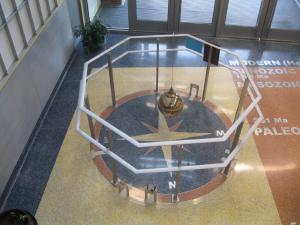Post
And Yet It Moves
21 September 2012
 Brian Koberlein
Brian KoberleinA famous story in the history of science is that of the trial of Galileo Galilei. Galileo believed that the Earth moved around the Sun, but this conflicted with the theological position of the Catholic Church, which held that the Earth was fixed in the center of the universe. This conflict came to a head when Galileo was put on trial, and was forced to renounce his assertion that the Earth moved around the Sun. As the story goes, after making his public renouncement Galileo muttered under his breath “Eppur si muove!” which in Italian means “And yet it moves!”
There’s no contemporary evidence that Galileo actually said those words, but it makes for a good story. It also exemplifies the frustration Galileo felt toward Church officials. Galileo had good reason to believe the Earth moved around the Sun. He had observed the phases of Venus, which showed that Venus moved around the Sun, and he had discovered four moons around Jupiter. Both of these observations agreed with the heliocentric model of Copernicus, which held that the Sun was the center of the universe.
Heliocentrism was a huge theological problem for the Church. It seemed unthinkable that God’s divine creation – humanity – would be placed upon a minor planet, rather than at the fixed center of the physical universe. Besides, the Bible clearly states (in Chronicles 16 and Psalm 93 for example) that the Earth doesn’t move.
The central dispute between Galileo and the Church was whether Galileo could assert that the Earth really did move around the Sun (that is, as a scientific fact), or whether he should present the idea as merely a hypothesis. Church officials admitted that Galileo’s observations gave the appearance of moving around the Sun, but argued that appearances could be deceiving. Galileo, they argued, hadn’t completely proven his hypothesis. Galileo, on the other hand, thought it was ridiculous to take poetic passages from the Bible literally.
This raises an interesting question: is there an experiment Galileo could have done to prove that the Earth actually moves? It’s likely that nothing would have convinced the Church at that time, but there is an experiment Galileo could have done to demonstrate the motion of the Earth. All he would have needed is a large pendulum. The experiment was devised by Leon Foucault about 200 years after Galileo’s trial.
A simple pendulum consists of a mass hung from a wire or string. Once released it will swing back and forth at a regular rate. With friction and air resistance, the swing of the pendulum will die down over time, but this happens slowly for a large and heavy pendulum. If the Earth were motionless, then a pendulum would swing back and forth in a perfectly straight line. It’s orientation would never change.
But the Earth rotates, which means everything on the Earth moves around in a circle once a day. If you are on the equator, you would travel the entire circumference of the Earth in 24 hours. If you are near the north pole, you would travel only a small circle in 24 hours. This means that while everything on Earth moves in a circle once a day, things closer to the equator move faster than things closer to the Earth’s poles. Your speed depends upon your latitude.
As a pendulum swings, it will be slightly closer to the equator at one part of its swing, and slightly farther away at another part. As a result, the motion of the Earth causes the orientation of the pendulum to shift slightly with each swing, an effect known as precession. The effect is very small, but it builds up. After several hours the orientation of the pendulum can be significantly changed. Watching the precession of a pendulum you can see the direct effect of the Earth’s motion. Galileo was right after all.
Foucault first demonstrated his pendulum in his cellar. His experiment gained such popularity that he was soon asked to demonstrate his pendulum in the Pantheon in Paris, where there is a Foucault pendulum to this day.
If you happen to be in the Rochester area, there is a Foucault pendulum a little closer to home. Simply take a trip to the science building at SUNY Geneseo. You can see a pictures of their pendulum above.